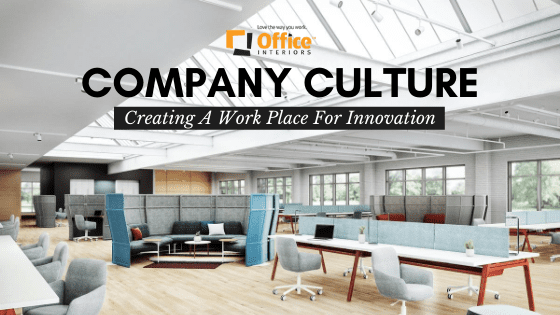It’s no surprise that the space in which we spend much of our time has a significant effect on the human psyche. Our homes, places of work, sports arenas, museums, and even airport terminals reflect that sentiment. The work environment can evoke excitement or dread, deep focus or distraction, collaboration or isolation.
That’s why it’s so important to design workspaces that inspire the workflow and culture set out by the company. Without a strong plan in place, the work environment will be ineffective over time and employee retention will suffer.
Employees are every company’s largest resource by far, and employee engagement is the key to innovation. Recent studies tell us that more than 70 percent of the workforce either dislike their jobs or are just going through the motions. And half of all office space is either not utilized effectively or used at all.
That is a scary reality, and it is leading forward-thinking organizations into change. Where does this employee disengagement originate, and how do we find strategies to turn the workplace instead into a landscape of innovation?
Or perhaps the real question is . . . can a business change its culture?
We at Office Interiors are strong believers that space itself can absolutely lead to an engaging workplace where employees can reconnect with the work, and with each other. This article is going to focus on how companies can focus on creating a workspace culture that fosters innovation and how to utilize office space effectively to transform your business.
What Is Organizational Culture?
The term “organizational culture,” or more commonly known as “company culture,” is simply, how an organization functions and expresses itself. You could even think of it as the personality of an organization and consists of three basic components:
- Values: what a company does, its mission, and how it represents itself.
- Assumptions: the attitudes, usually unconscious, formed through company processes and actions that inform what employees think.
- Artifacts: what a company represents in the form of technologies, products, publications, processes, location, dress code and architectural design.
A good leader knows that having a healthy company culture can be a strong catalyst for collaboration, engagement and employee innovation—all of which help a business yield higher returns in the long run.
Why The Workplace Stopped Working
Many organizations today still operate on old and outdated business models. “If it ain’t broke, don’t fix it” is a commonly used phrase in some work environments. And while that statement is true to some degree, it’s ideas like those that will hinder innovation and employees will simply not want to come into work in such environments.
It’s time to change the conversation and the one-size-fits-all solutions of the past. We’re using ideas more than a half-century old to design buildings. Many of us who design office workplaces have seen this problem coming for a long time. And yet, here we are, still playing with old structures and older ideas.
Change Your Space, Change Your Culture
Changing a company’s culture doesn’t happen overnight, but rather it requires a well laid out plan to effectively generate change. Cultural change programs can come about in three forms:
Evolutionary
This method of implementing change allows it to occur slowly over time. Making small and gradual changes, with the end goal set on company-wide transformation.
Focused
The focused approach involves taking measures exacted upon only certain elements or subcultures within the company that need a cultural shift. For example, analyzing the workstations or collaborative spaces.
Revolutionary
This approach can be a turbulent one and often comes with added costs, such as employee turnover or low morale. Enacting Revolutionary change involves forcing an entire organization to change course drastically in a shorter period of time.
One of the primary reasons that cultural change programs can fail is due to the fact that they are either too drastic, they demand too much, and they are enforced too quickly.
Luckily, there is a guide to help you manage a cultural shift within your business. The guide is called Change Your Space, Change Your Culture: How Engaging Workspaces Lead to Transformation and Growth. Written by Rex Miller the principal and thought leader for mindSHIFT, Mabel Casey who has led Global Marketing and Innovation for Haworth, Inc. since 2006 and Mark Konchar the Chief of Enterprise Development for Balfour Beatty Construction.
This book reveals the secrets of companies that discovered the power of culture and space. This insightful guide reveals what companies lose by viewing office space as something to manage or minimize. Packed full of practical tips and implementation details, the book helps the reader see that the workspace is, in fact, a crucial driver of productivity and morale.
Check out this book to read about how much our environment can inspire us, and how to make that happen within your own business!
Have More Questions About How To Change Culture Within Your Business?
At Office Interiors, we strongly believe that it is our responsibility to provide our customers with answers and information they need to make an informed decision. We aim to answer all the questions and concerns our customers might have.
After reading this article, if you still have any questions feel free to contact one of our team members. We would love to have the opportunity to earn your business and help you to love the way you work!
Cody Turner
Digital Content Specialist
Office Interiors





